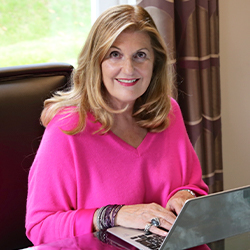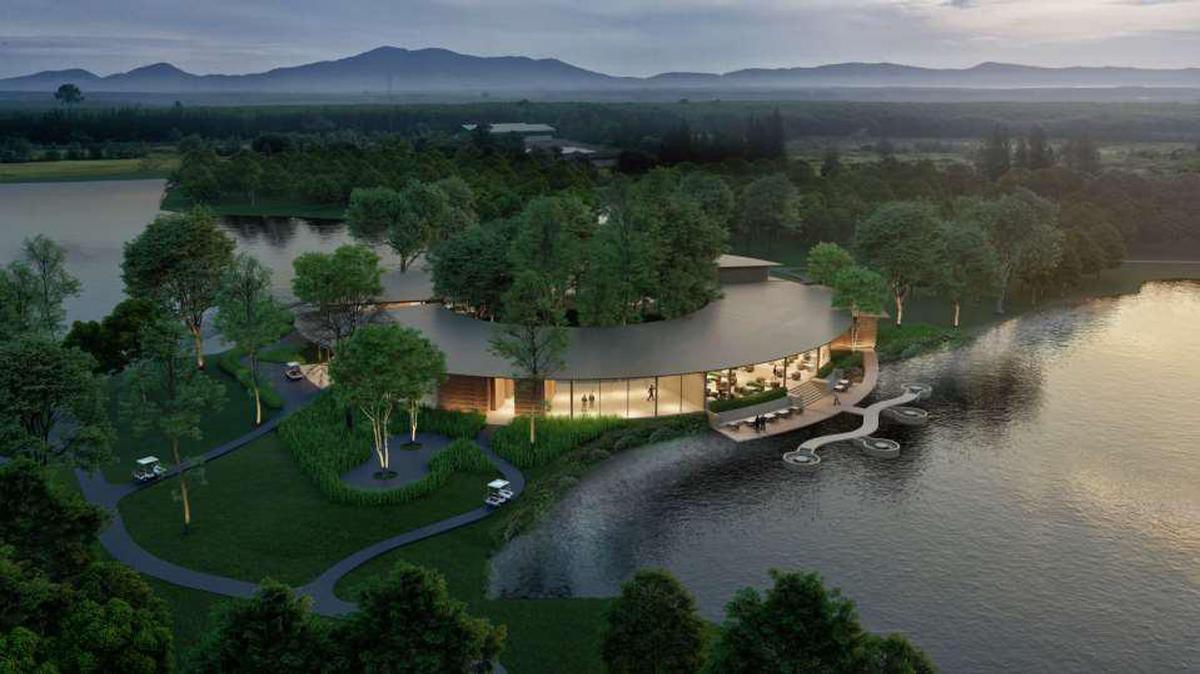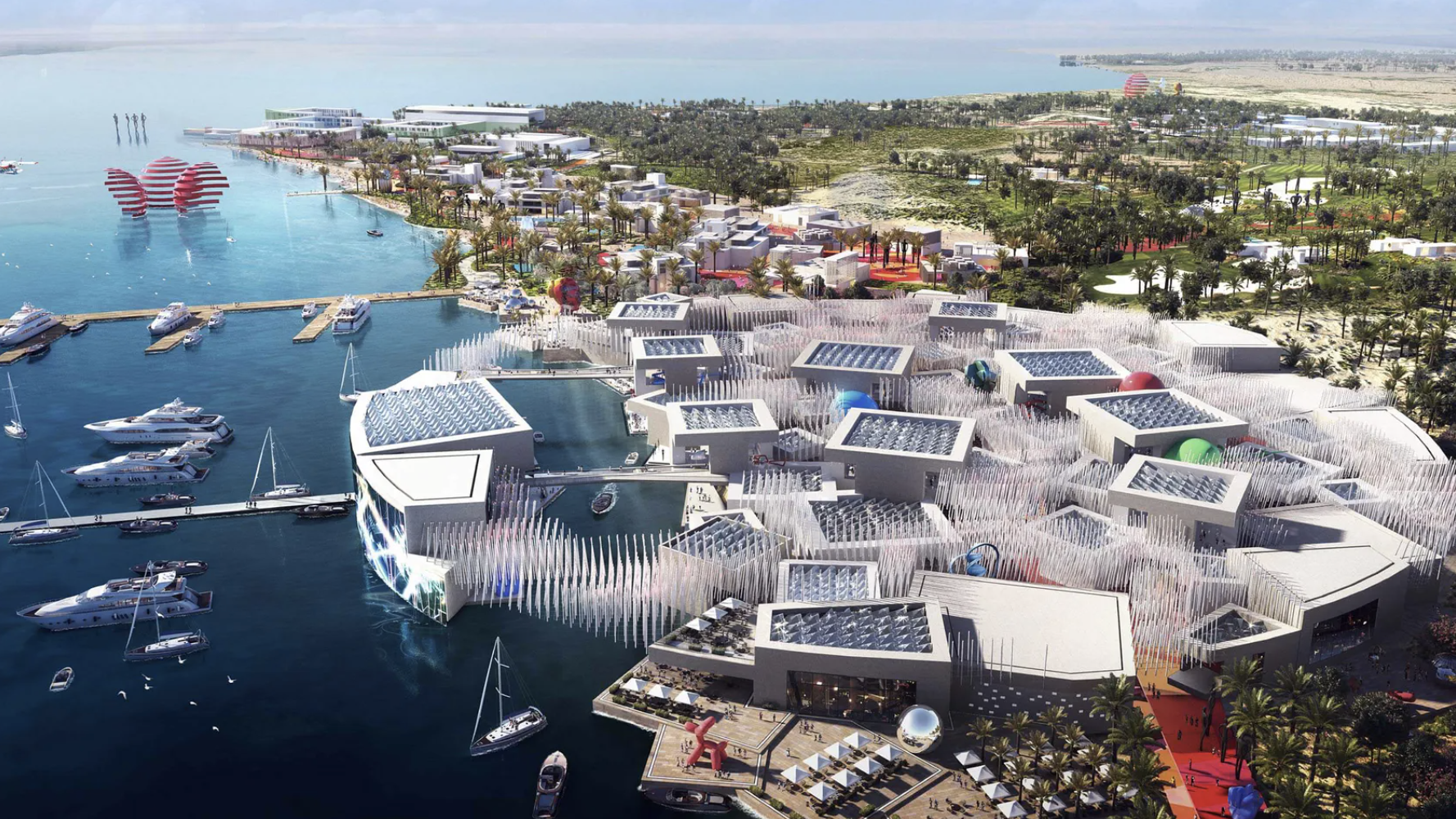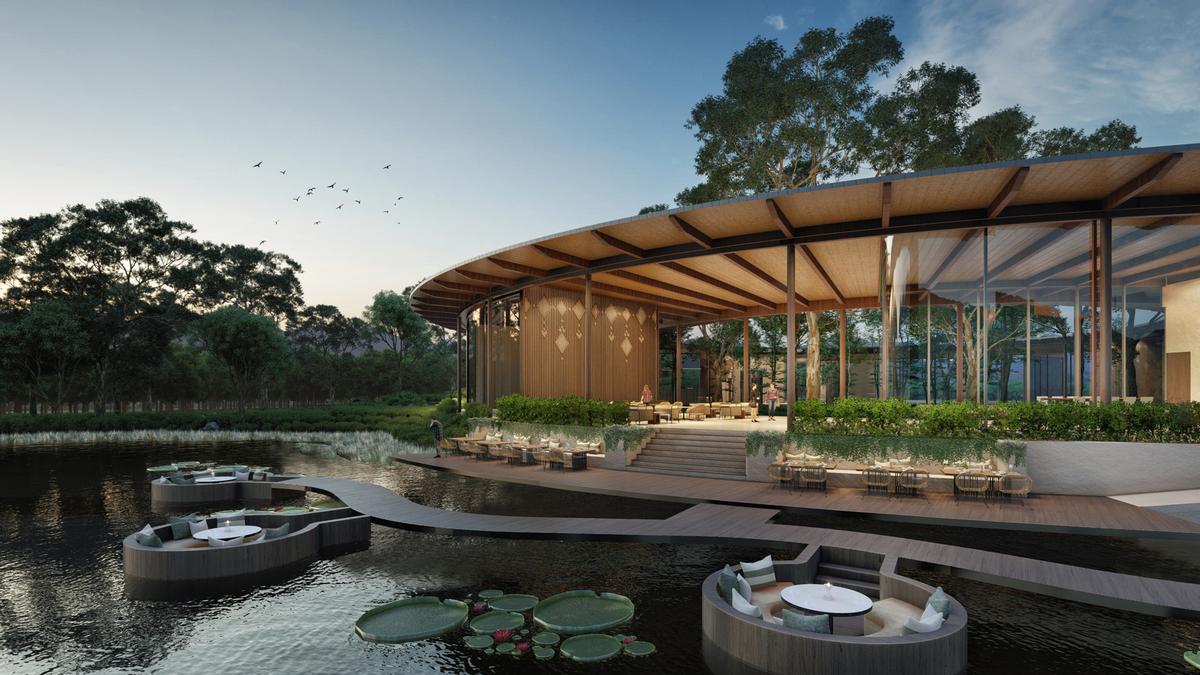
Sue Harmsworth, spa industry visionary
Sue Harmsworth needs little introduction: She has spent five decades shaping the global spa, global wellness and beauty industries (responsible for designing 500+ spas in 65 countries), and her services were honored by Queen Elizabeth the Second. She founded the global brand ESPA in 1993, which she sold in 2017; is founder of Sue Harmsworth Ltd, which advises owners and private equity firms on creating wellness destinations; and she sits on various boards, from Forbes to the Global Wellness Institute (GWI).
In this edition, Harmsworth discusses:
- Why the term “wellness” has reached near meaninglessness—and how we need new distinctions
- How integrative wellness resorts—which marry “serious” and “light” wellness—are the future but will require a whole new kind of operator
- How the pandemic experience is fueling consumer desire for wellness real estate—and how more affordable communities are rising
- Why the spa practitioners of the future must be trained better and deeper
- What investment bet she would place in wellness

Beth McGroarty, GWI VP of research and forecasting: In your recent master class with us, you discussed how the term “wellness” has become so oversaturated and overstretched it’s reaching the point of meaninglessness. And that the time is now to make new distinctions. Talk more about this problem, what new distinctions need to be made, and why.
Harmsworth: I’m starting to hate the word wellness (laughing) because it’s become so generic it’s utterly confusing the consumer. Everything is labeled “wellness”: You go to the supermarket, and you’re overwhelmed. We need new terms and definitions—and as an industry, we don’t challenge ourselves enough to be clear with consumers. It’s becoming a real issue with social media moving so fast and so much copying going on.
The history of wellness and spa—and the regional differences—add to the confusion. What we think of as “wellness”—all the ancient medical traditions from TCM to Ayurveda; amazing, centuries-old “kurs” at European health farms; the hydrothermal piece; advanced massage techniques—these existed forever before modern “wellness” was born in the spa industry in the 90s.
As the spa industry took off, the word and concept became confusing, and it has to do with what the US means by it versus the rest of the world. In the US, every beauty salon, or every two treatment rooms by a pool, suddenly became a “spa”—not what I, as a European, would call one. When the spa movement became powerful in the 90s, stress was the overwhelming focus. The world was changing: Women were going back into the workforce, flying constantly became the norm, and technology was taking over the world. Stress was the huge issue, and most spas were built for relaxation—from massages to meditation. What I would call “light wellness”—with no negative connotations.
But now, we have a much more complex set of modalities and advanced practitioners at wellness destinations. We have fitness/sports, a much more serious nutrition and microbiome piece, spa, complementary medicine, and beauty—but aesthetics as in both medicine/machines and more non-invasive approaches. And we have more medical or “serious” wellness. But there can be confusion around “medical wellness” for consumers: They may think it means traditional allopathic medicine and ask, why would I go to an expensive resort when I can do the same things with a specialist? The future of medicine at destinations is functional medicine and preventative, advanced testing and diagnostics: whether hormone analysis, 3D scanning analyzing bone density, muscle mass and visceral fat, or microbiome and nutrition testing. All to create a personalized health plan.
So, you have “light wellness,” which spas and hospitality destinations have excelled at. You have medical or “serious” wellness, but it’s different this time around: It’s preventative, functional medicine and diagnostics. That’s why I’m so keen on new definitions and distinctions: “Wellness” is too imprecise to mean anything. People have got to focus on what their consumers want and get clear about what they’re delivering.

McGroarty: I know you’re working on some big integrative wellness destinations—and you believe that’s the future. Why?
Harmsworth: It’s absolutely the future, with all the lifestyle diseases hitting us so hard, and I’m working on properties now that bring everything together: functional medicine and diagnostics, an aesthetics clinic, and all the traditional wellness, from complementary medicine to fitness to serious meditation (with Buddhist monks or TCM). Mental and cognitive health will be huge coming out of the pandemic, with depression and anxiety having risen exponentially since COVID and now affecting a third of the population globally.
One reason the functional medicine and diagnostics piece is so key is that with all the wonderful destinations focusing on Asian traditions (the Indian, Thai or Balinese approaches), people weren’t given concrete results. When you’ve gone to medical-wellness clinics in Germany or Austria, they do advanced testing (whether hormones or vitamin deficiencies) on intake, and when you leave, you do them again. You can see the results. It seems crazy, but you really can significantly impact your blood pressure or cholesterol in one week. What I want to do—and it’s the future—is to be able to program individuals on a personalized plan with a very full set of stats so that they can see their results over time.
McGroarty: Operators and investors have struggled to get even the ROI of a spa in a hotel project. What needs to change to pull off these far more ambitious integrative wellness destinations?
Harmsworth: First, it’s going to take an entirely new operating model and type of operator. There’s lots of great operators on the clinic side; I could run through some of the big names from Lanserhof to SHA, but they’re not as integrated as I think the future will be, and I don’t think there’s an operator out there right now with this forward-thinking, bring-it-all-together approach.
We need to remember that, historically, spas—outside the US—haven’t been particularly profitable. That’s because the hotel model is to view every department as a completely standalone profit center, so they isolate a spa’s costs and revenues (staffing, utilities, laundry, etc.), so it often doesn’t show a good ROI—and also, unless you have a hotelier or developer who really gets it, they haven’t been spending the capital on spas that would let them actually see the ROI.
In the US, developers who’ve been building shopping malls and condos typically don’t understand spas at all: they think narrowly in terms of square-foot return on investment. But this will change: The hospitality industry is recognizing the importance of health and wellness to the consumer, and that means everything: nutrition/menus, lighting, air and water quality, sleep quality, a great spa/wellness center.
What operators need to learn is that you’ve got to turn the model on its head. It’s much easier to make an integrative wellness resort profitable because the medical diagnostics and medical-aesthetics areas (while the practitioners are much more expensive) can be hugely profitable, far more so than any spa. Integrative wellness resorts will have a whole different profit and loss model than the departmental formulas of hotels: You will look at the bottom-line profit across all departments, where all is wellness (rooms, F&B, spa, medical services, aesthetics, etc.) It’s one pot; they will be very profitable, even if there is a loss leader.
Second, we need to build destinations broad enough so the consumer can do different things at different times. Most people that want a vacation want wellness: to eat right; to have stimulating, healthy things for kids (cooking classes, foraging, sailing—not some boring Kids Club)—but they want to relax, have a few drinks, have fun. On the other extreme, some people need much more: You’ve had cancer or put on 20 pounds, etc. You want the strictness and deeper functional medicine of a medical-wellness environment to do something more intensive, often alone. And then desires fall everywhere in-between. More healthy people now want to assess their life once or twice a year for preventative reasons: to be the best at every stage of their life, to pick up the little things before the big things happen. Like me, they start seeking prevention in their 20s and 30s. This is all much broader than what’s come before. And if you can bring it all together without confusion, it’s going to make money. For sure.
This is a design issue and one I’m right in the middle of with my projects. Most medical spas have been quite small (say, 50 bedrooms). To achieve this new integrative model, the resorts are going to have to be bigger, and the whole nature piece will be enormous: the great outdoors, a warm enough climate, and the quality of the air. It’s about creating a place that can have paths that run from fun and families to the more serious, preventative stuff.
Third, it will be much easier to make an integrative wellness resort stack up financially with the residential component.
I’m working on the Amaala project on Saudi Arabia’s Red Sea, spearheaded by their ruler, Prince Mohammad bin Salman bin Abdulaziz Al-Saud, a wellness resort and community at the ultra-high-net-worth end. It’s set on 435 miles of coastline and will integrate everything from advanced medicine to comprehensive wellness approaches—and many of the main wellness brands will be there. It’s an interesting example of designing for different needs and guests, with both an integrative wellness resort for adults and another for families.

McGroarty: There’s no greater expert—give me a prediction for the future of spas.
The really good spas where the therapists and treatments are good, the hardware and thermal areas are good, the design and flow are good, the air quality and infection control are good—they will start to take on even more approaches from the “light wellness” side.
However, in the future, spa therapists and practitioners are going to have to be much better trained with deeper skills. They need a much broader knowledge set to be able to deal with all the things increasingly coming their way. They’re bombarded by clients with more serious issues (diabetes, cancer, heart disease, depression and grief): The majority that walk in now have some kind of contraindication. This is why I’m so strong on what we’re doing in the UK with the training ruling bodies, putting modules together so that well-qualified therapists (we call them level 3 or 4 here) can keep adding modules (whether cancer or nutrition training) so they can deliver more “wellness” than just massages or facials, be empowered to deal with the day-to-day realities they see, and be set on a career path of constant skill-upgrading. The spas that will take it to the next level will focus on training in a much more intense way.
McGroarty: The pandemic seems to have given wellness real estate and communities new momentum. What do you see in the future?
COVID has obviously woken all of us up to working from home, and this ongoing reality will drive real growth in wellness real estate and communities—and in more affordable projects. Look at me: I haven’t budged from my second home in Tenerife since October. This is the longest I’ve been in one place in 40 years (no planes), and I’ve worked just as efficiently from here as anywhere. It’s completely changed my thinking: I love being in one beautiful place, and I’ll never fly the way I did before. All those businesspeople flying week after week; that’s all going to slow way down and have to be justified.
Since the pandemic, people are spending a lot—or all of—their time in their second homes. More people will choose a wellness community as the primary (or near-primary) residence, and maybe they’ll have a pied-à-terre in the city and go in one or two days.
This will drive more affordable wellness communities. I’m working on a wellness real estate project now (still at the concept stage) where you go from the most expensive villa at $1 million to artisan homes down to $300,000—that’s relatively affordable. It will be an interesting community: They will grow everything themselves and have their own Waldorf school for the kids.

Another multisite project I’m working on is also affordable because the cost of the real estate makes the difference (and this is purely real estate, with no hotel). I can’t give much away, but it has the obvious things you would expect—yes, yoga, yes, a spa—but it’s really much more about an entire lifestyle of wellbeing. We will see more of that.
I’ve always said, don’t put me in some place with a bunch of old people—and the way forward is multigenerational wellness communities.
It’s all so interesting how desires are shifting: Even people with lots of money, while they want to buy in a better, more naturally beautiful location, don’t necessarily want to buy bigger. I’m working with a very wealthy New York developer (third-generation real estate company) on a Costa Rican wellness community. He doesn’t want a bigger villa; he wants a truly sustainable villa for his kids—a whole different, healthier way of living. He’ll have to go to New York sometimes but not often.
McGroarty: You’re an investor in wellness. Name a segment you would place a future bet on.
Harmsworth: I’ve talked about the future for integrative wellness destinations, with more serious, preventative functional medicine and diagnostics. People go to “serious” wellness resorts, do a battery of tests/scans, come out pumped up to change their lives, and—it’s human nature—in a few months, they’ve fallen off the wagon. I think a crucial future of the tech piece is both advanced diagnostics and anchoring people to the site for ongoing monitoring and follow-up—using AI and “tele” models. I’d invest there. (As an aside, I can’t stand all the mindfulness technology; it doesn’t work for me.)
I also think you have a huge singles market coming up (people divorced, widowed, that don’t want to get married or remarried), so hospitality models that combine comprehensive wellness with fun and the social piece will rise.

























































Holistic skincare and body treatment will be the way forward for spa global. The Caribbean will be the focus on wellness tourism and it natural products. Client will require my personalize experience and construction of buildings will have take a wellness approach. Wellness is the key to reduce a country health problem which is caused my stress factors of the society.
I am looking forward for wellness practitioner to get the respect and the international recognition they deserve.
What an interesting interview, I totally agree, additionally these trends to impact more on lifestyles, prevention and differential approaches to health care will lead directly and indirectly to a more sustainable health system that allows to distribute in a more efficient way its resources.
The future is to prevent and reverse diseases by treating the real causes of the disease, that is, their lifestyles and better if this empowerment is carried out in a place that combines what is necessary to have a great experience in a great destination.
What a great interview! Your direct, well-researched questions, Beth, enable Sue to get to the heart of the matter: Integrative Spas are ready to flourish! provided the physical & functional design complements physiological and environmental requirements for well-being, has a holistically profitable & sustainable fiscal model, and aligns with the needs of the culture/community/demographic.
Sue, I love your effective use of fundamental terms such as “light” vs “serious” wellness, your recognition of requisite training for Spa Operators & Practitioners in the “Health-Enhancement model”, of guiding consumers in discerning between complementing their health & treating the disease, and of providing a “pre- & post-status” health-assessment model! Since our world operates in a mostly disease & fear-based model of “healthcare’, here is an opportunity; a need, to transition our healthcare science philosophy to a passion of well-being, looking to health as the “theme”, and living in the gratitude for life.
True, there is a problem with “semantics” which has lead to practical misrepresentations; Spa: Salus Per Aquam, Wellness, Natural, etc. However, there’s also an opportunity to use or brand specific terms with clear definitions: Functional Medicine, Vitalistic Healthcare, Health Enhancement, Homeostasis, etc.
Yes, let’s use the healthy sports & fitness boom, and heightened use of Yoga & Ayurvedic, along with the high tech physiological health assessments & wearable fitness gear, to educate & train people into knowing & caring for, supporting the innate function of the amazing body.
However, the most powerful contribution I read in this interview is the pinnacle of your vision; seeing more of an “entire lifestyle of well-being …that combine(s) the comprehensive wellness with fun and the social piece”.
My contribution here: Ferdinand “Fenn” Esser is a licensed holistic healthcare practitioner for 35 years, a University Professor & Program Director in Health Sciences, and a Lecturer on Human Clinical Anatomy & Physiological Homeostasis.
I see the future boom of health enhancement in the emergent healthcare model that positions the need for Allopathic medicine, and Vitalistic healthcare, with the heart & caring of our common, collective humanity.
I call this “The Unified Theory of Health & disease”. ~ Fenn
As always, showing her world class experience and expertise Sue’s down to earth, common sense, peopel behavioural centric advice shines through. About time hospitality invested in joined up whole service wellness – it’s not about a bed stay . Guest have much greater expectations as precious time-out wll mean more.
Thank you Sue, this is truly insightful and after years of working in Marketing and Branding (in agencies servicing many different global brands and industries) I am now making a conscious decision to divert my skills to the “wellness” sectors and your vision has certainly helped guide the way I wish to approach this.
Thank you !!!
Fantasitc planning and design the vedio is really a fest for eyes and mind. Healthy Wellness for Wealthy
Amaala is very important and beautiful ❤️👍🙏 Red ⛵🍒⛵ destination for international integrated wellness and heAlthy retreats for gulf Love 💕😘💕 and Arabia Senegal and financial investment promotion for health care provider in pandemic undermines care for New facilities ⛵ Love 💕 well Ness integration Health consultant Dr Rajendrakumar Bidari CEO BRKINS Bangalore India [email protected]
Very nice and clean and good health care well Ness destination for the all Dr Rajendrakumar Bidari CEO BRKINS Bangalore India [email protected] phone 917204908173 wellness centre for future consultant
Hello! Thank you for such an informative and really useful article in our difficult time. It seems to me that people have not yet fully realized the importance of this issue. After all, it is much more important to prevent the development of mental illness at an early stage than to deal with the dire consequences. I am not at all against the closure of bars or gyms during a pandemic, but the closure of institutions that provide emotional and psychological support in such a difficult time is really a blow not only for the owners of these institutions but also people who need psychological help.
That’s a nice interview, although saying the stigma has “almost disappeared completely”? I don’t think I can agree with that. We are about a hundred years behind in providing stability for people with mental health issues. It’s not all about health and wellness. People are more comfortable these days with “little disorders” like OCD, anxiety and depression but what about the bigger ones like PTSD, Complex PTSD, both versions of bipolar, dissociation disorders and yes schizophrenia?
So many people can’t get the help they need because their insurance won’t cover it and they can’t afford treatment leading to self-medication with OTC drugs and alcohol. So many people talk about treatment including working out and nutrition, but you can’t treat something without a diagnosis! Anxiety and depression is such a broad term, it could be anything! And yet people are commonly misdiagnosed because there aren’t any decent psych eval places around and not every disorder is in the current DSM-V. It has taken me YEARS to find decent people to treat my complex PTSD and now I think I finally found them. My point is that it shouldn’t have taken so long to find them. And even now, yet still can’t legally say I have complex PTSD because it’s not in the DSM-V. How many people are being misdiagnosed because their disorder isn’t in a silly book?
Just because the stigma is slowly fading doesn’t mean there isn’t still so much work that needs to be done besides health and wellness, research and treatment wise. I hope to be able to do something like that one day and I hope that will be the focus of lots of organizations one day.
Thank you, a great article offering some good reflections. However, I dare to say that in fact, the understanding of wellness, its definition, and core idea hasn’t changed much through CoVid. The awareness may have changed, its time to wake up- individually and collectively (and that’s also not new) and to understand that Wellness has always implied (from its very origin in ancient times, greek philosophers) a systemic, integrated, and preventative approach. But yes, it’s certainly time that we move from Health-Care to Well/Self -Care as a paradigm, that needs to be integrated into the public sector and such called health-care system.
The only thing I disagree with is including PF in the Healthcare umbrella. The professionalism of most PF staff members is sorely lacking. Most of the employees are just putting in the hours and doing just enough to keep the boss off their back. I know, what do you expect for the price. But Healthcare is not a budget, barebones business run by kids on their first job.
I agree. Planet Fitness is not that good. It is about quantity over quality, hence opening so many clubs which leads to more miscommunications and mistakes. I also find the “judgement-free zone” to be incredibly wrong. No one, as hard as they try, can ever be judgement free and kicking people out for expressing an opinion is wrong and a violation of our first amendment rights. Now I’m not saying people should judge, it’s no ones business to judge someone’s workout routine and if they do, report it. Don’t run away from your problems just because you’re intimidated. See a therapist and work on your self-esteem and you’ll be fine
Thanks a lot for this heartfelt, resonant and educative conversation.
Widespread and steadily growing realisation that Mind-Body Wellbeing (MBW?) is the pathway for most, while healthcare a.k.a.“medical care” is the one for the ill, will dispel the stigma the words “mental health” evoke, and this will script the future’s prologue.
Arrays of embedded experiences that kickstart and reinforce MBW will grow, and many will steadily become enduring Habits of Mind.
The processes may well become the morning of The Age of Transformation.
Whether Covid19 has changed people’s concept of wellness remains to be seen. What it has done is shown that people with compromised health are far more susceptible to additional disease or disorders. Since the majority of health issues in the USA, currently, are a byproduct of lifestyle choices, knowing whether the emphasis on life style changes remains once the pandemic urgency has passed is only a. matter of time.
Hopefully, with an increased awareness of health care disparity, a generation more than wiling to talk about it, and the ability to confront the problem if we wish, we can begin to create options for more equitable health care dispersement as well as follow-up. Nothing begins with first having an awareness and then the willingness to deal with the issue. Recognizing that when one population is so extremely neglected, it impacts the rest may sadly be the one great motivator to create change. Creating the change however is the bottomline so whatever stressors stimulate that movement it is a success.
Yes, I believe it is changing societies awareness of health and nutrition. I am in the Wellness sector and am looking forward to an uptick. Could not agree more that gyms and wellness should not be closed and should be considered essential! So true.
Look forward to assisting others in their fitness journey.
Kate LoPiccolo
Fantastic interview and great insights as always – thank you Victor and Beth!
What an inspiring interview to wake up to this morning – thank you!